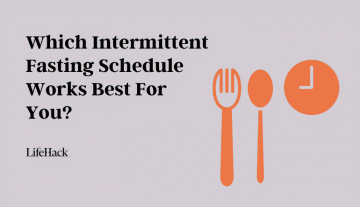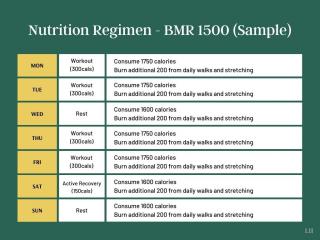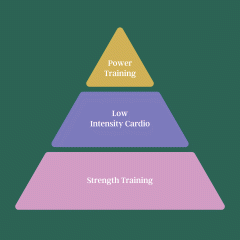With all the inputs, information, and clutter that come into our lives today, just staying on top of it all creates so much stress and frustration, and it can often lead to feelings of helplessness and anxiety. Most of the time, you simply don’t know where to start when you want to learn how to be organized.
However, it is, in fact, something that can be learned.
By developing a few strategies and methods, and having a system in place that quickly deals with all these inputs, you can finally get control of your clutter and, more importantly, stay clutter-free.
Here are a few rules that can help you on your path to a clutter-free life.
1. Don’t Use Your Computer’s Desktop for Storage
Your computer’s desktop was not designed to store your files. Your desktop should be clean and file free. Not only does a cluttered desktop slow down your computer, but it also makes finding things painfully slow.
Instead, as you’re learning how to be organized, create a basic folder structure inside your documents folder. Now, this needs to work for you, but try not to make things too complicated. What you can do is think about the kind of files you will need to keep, and categorize them between your personal and professional ones. For me, I have two basics folders inside my documents folder, one called “work” and one called “personal.” Inside of these, I have subfolders organized according to my different roles or categories.
It’s simple, and it allows me to quickly find what I need when I need it.
Now, I do understand that during the day, when you are doing your work, you may need quick access to certain images and files, and it’s okay to hold them on your desktop temporarily. However, make it a habit to clear your desktop at the end of each day as part of your closing down routine (more on that later).
2. Learn to Use Your Computer’s Search Features
It surprises me how few people know how to find documents on their computer with a simple keyboard shortcut, but it’s one of the easiest things to do as you’re learning how to be organized. On a Mac, for instance, CMD + Space bar brings up the spotlight search, and you can type in a date, a file type, a keyword, or a file name.
On a Windows computer, open the start button, and begin typing the file you are looking for.
In both cases, you do not need the exact name of the file. Just type a few letters, and within seconds you have the file you need.
When you learn how useful your computer’s search features are, you will be much more comfortable removing all those files scattered around on your desktop and putting them in an appropriate folder on your computer.
3. Keep Your Desk Clear of Clutter
Just as with your computer’s desktop, your desk’s desktop should also be file and clutter-free. Use your drawers for those paper documents that habitually hang around on your desk—a cluttered desk does not encourage inspired work.
Also, take a look at your workspace, and ask if what is on your desk is necessary. Often, we have stuff on our desks that serve no meaning and has no sentimental value to us. It’s just something we have always had on our desk. If you don’t need it or it does not inspire you, remove it.
And while we are talking about your desk, make a decision this week that you will go through your desk drawers and clear out all the old pens, cups, and other debris that has accumulated over the years. Trust me on this one, the act of cleaning out your drawers and removing all the clutter on your desk will give you renewed energy and ignite a lot of creativity that has been pushed into the background. You will love working at your desk again.
Pictures of your loved ones and a few inspiring mementos are fine. Just don’t go crazy with them. Keep them to a minimum.
4. Create a Closing Down Routine
This is such a great way to make sure you keep your files and other stuff organized, so make it an essential skill to adopt when learning how to be organized. Give yourself ten to twenty minutes before you finish your work for the day to clean up your desktops.
Move your files to their rightful place, and delete anything you no longer need. I often accumulate a lot of screenshots throughout the day, and if I am not removing them, at the end of the day, they soon start building up.
Before I shut my computer down for the day, I clean these up, delete the screenshots if I no longer need them, and leave my desktop file free. It’s a beautiful way to start the next day with a clean desk and a clean computer desktop.
5. Incorporate a To-Do List Manager Into Your Life
Writing your to-dos and commitments down on post-it notes just encourages clutter. Sure, it might seem like a great idea to stick these to your computer so you don’t forget things, but over time you become numb to them. They just become a part of your desk, and you ignore them.
Remove them. Take your tasks and commitments, and put them into a to-do list manager. Whether you use Windows or Mac, they both come with to-do list managers. Make good use of them.
You do not need to create an elaborate to-do list structure. All you need is an inbox for quick entry and the ability to date tasks for when they need doing.
I use a simple structure in my to-do list manager. I use a system I call the Time Sector System where I create six folders:
Inbox This week Next week This month Next month Long-term / On-holdThen, whatever I collect, the only decision I need to make is: when am I going to do the task? I can then drop the task into its relevant folder.
One of the biggest causes of clutter on desks (and in bags) are all those little bits of paper you use to write down critical information and telephone numbers or email addresses. When these accumulate, they are easy to lose, and you waste a lot of time searching for them.
Use your digital devices for these. You can take a photo of a written note. You can quickly add a telephone number or an email address into your to-do list manager (or notes app), and if you have syncing set up between your devices, you will have access to the information on all your devices. And what’s more, it will be searchable.
6. Set a Weekly Time to Declutter Your Devices
This is an area that can quickly creep up on you, so take time to develop this habit as you’re learning how to be organized. Taking photos and videos on our phones is too easy these days. We take a picture, and we just leave it in our photo album.
Over time we end up with thousands of photos in our electronic photo albums that are not worth keeping. I spend around ten minutes on the weekend (usually Sunday evening) deleting all the images I no longer want to keep. It keeps my digital storage needs down—which saves money—and it means all the photos in my photo album are photos I want to keep.
I do the same with my downloads folder. We often download a PDF intending to read it later, and then we completely forget about it. As time passes, we end up with hundreds of PDFs and other documents we are no longer interested in or no longer need. Delete them or file them. Just don’t leave them in your downloads folder.
If you want to stay clutter-free, this habit will reward you. Doing this weekly means you will spend around thirty minutes each week cleaning up and filing. Not doing so means you will end up having to spend a day or two just dealing everything, which will leave you feeling like you’ve wasted those days.
7. Do an Annual Clean-up
One of my annual rituals is to clean out all my folders and notes. I take a day off from work and spend the day going through everything on my computer and delete anything that no longer has any value.
I choose the winter holidays for this. Not only is it the end of the year, but many companies are on holiday, and things are generally quieter.
I go through all my work and personal folders and clean out anything I no longer need. I also archive a lot of files onto an external hard drive—just in case they are needed later.
It’s also a good time to clear out your email folders, too. Email can become a bottomless pit of emails you no longer need. Go through and purge those. You will feel so much better when you do this.
With email, you can also declare yourself email bankrupt and just delete everything in your inbox (or if you are not comfortable doing that, declare a ‘soft’ email bankruptcy and you move all your emails into a folder called “Old Inbox”).
Doing this might seem like a radical step, but it is incredible how much clearer you become. You get to see what you have been holding on to, what you may have missed, and you find yourself with a lot more space ready for the year to come.
8. Do a Little, Often
I learned this a long time ago. Many years ago, I tried becoming a salesperson. I failed miserably at it, but during my training, I shadowed an experienced colleague. On one of the days I was shadowing her, she had to complete and file her expense report for the month.
I vividly remember her opening the glovebox of her car and pulling out handfuls of receipts and then painstakingly adding them to an expense report—we did things on paper in those days. Four hours later, she finally finished the report.
I remember at the time thinking this was not a great way to do this. When I got my chance to go solo, I began stopping my car in a car-park on the way home and added that day’s expenses to my expenses sheet. It took me a few minutes, and as I was doing it on the same day, I remembered exactly what each receipt was for.
When you’re learning how to be organized, you can use this principle for almost everything. Clear out your email inbox every day, delete screenshots from your desktop and empty your bag at the end of the week, and throw away anything you no longer need.
Doing a little often makes things so much easier, and you do not have that mental backlog creeping up on you where you have that nagging feeling in the back of your mind telling you you have to do something—only you can’t remember what that something is.
Final Thoughts
If it doesn’t come naturally to you, learning how to be organized can take time and effort, but it’s ultimately worth it. Becoming clutter-free helps you in so many ways. You have a more pleasant work environment, and de-cluttering your environment also helps to declutter your mind. On top of that, finding stuff is easier, and that means your overall productivity goes through the roof. Choose the strategies above that will help you in your daily life and start getting your life organized today.
More Tips on How to Be Organized
Featured photo credit: Jeff Sheldon via unsplash.com





























































